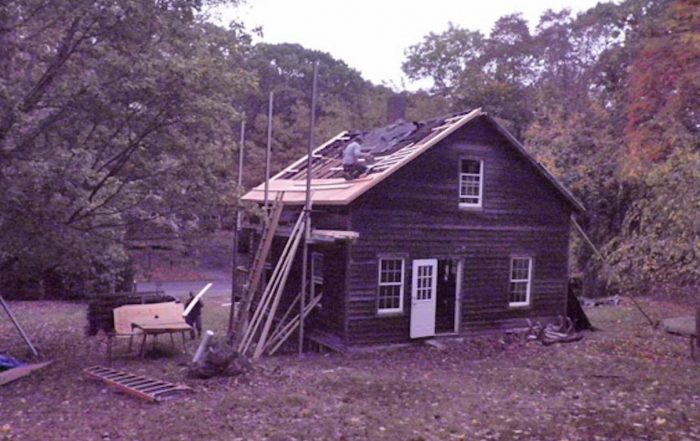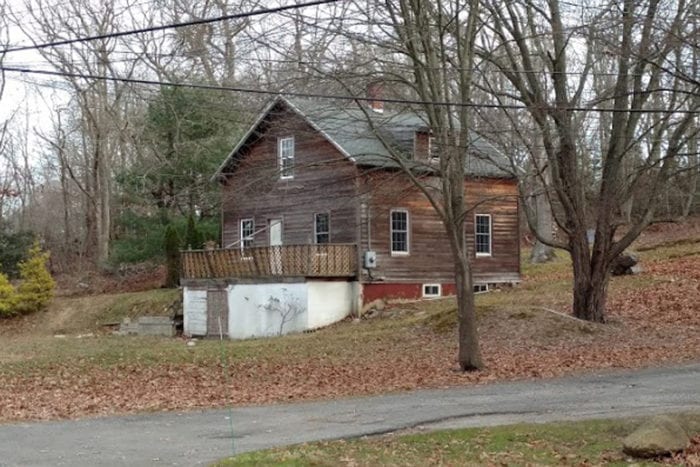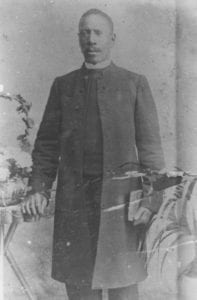The Robert David Lion Gardiner Foundation is playing a part in helping to restore the historic Eato House on Christian Avenue in Setauket.
The foundation recently awarded the Setauket-based Higher Ground Inter-Cultural & Heritage Association, Inc. an Organizational Capacity Building Grant. Higher Ground, which works to preserve the culture, indigenous inhabitants and historic inventory of the Native and Afro-American community, is currently restoring the house.
According to RDLGF, this type of grant will enable Higher Ground to work with four professionals in the areas of governance, collections, site assessment and outreach as the foundation will pay for the services. Higher Ground has been working on the continued preservation of the Bethel Christian Ave., Laurel Hill Historic District, and currently, the organization co-owns the house with Bethel AME Church.
“The Higher Ground project speaks to a story of diversity,” said Kathryn Curran, executive director of RDLGF. “This association highlights this area’s role in establishing and recognizing that important cultural heritage.”
Robert Lewis, president of Higher Ground, said the first stage of the Eato House’s restoration was completed Dec. 1. He added that the first stage of work focused on preventing water from penetrating the structure. To accomplish the goal, existing roof rafters were fortified and a new roof was insulated. New gutters and leaders were also added to match the 1900 architecture and the
A future second stage of work will focus on the foundation of the structure and interior stabilization.
“The second stage is obviously dependent on funding availability,” Lewis said. “The prospects for acquiring additional funding in the future will be much brighter when the RDL Gardiner Capacity Building Project is completed.”
The grant from the RDLGF grant will enable members of the Eato House Restoration Committee to be trained “to pursue and manage historic preservation activities; manage projects, and to adequately fulfill standard requirements for State registered non-profits,” according to Lewis. The grant will also introduce the organization to promotional activities, marketing strategies and high technology processing.
“Participation in the OCB project will increase the competency of Higher Ground to protect structures, documented history, environmental history; to preserve artwork, oral history and archaeological documentation,” Lewis said.
While RDLGF is known for helping to preserve Suffolk County’s history, other works of the foundation aren’t as well known.
“Less known, but equally successful, are the efforts of the Robert David Lion Gardiner Foundation to identify, and engage with small, relatively hidden areas of valuable, Native, and Afro-American history being lost in minority communities where small preservation organizations labor to survive,” Lewis said.
In a 2017 interview with TBR News Media, Bethel AME historian, Carlton “Hub” Edwards, said the Eato House was once home to the Rev. David Eato, one of the church’s first pastors, and his wife Mary Baker, a freed slave.
Baker moved to the North after being freed from slavery and settled in Port Washington where she was an organist at a church. It was there that she met Eato and, after marrying, the couple moved to Setauket, and the reverend became one of the first ministers of Setauket’s Bethel AME in the early 1900s. Mary took on the role of superintendent of the Sunday school and held the position until the late 1930s.
Edwards said the members of the Eato family owned the house until the church purchased it a few years ago.







